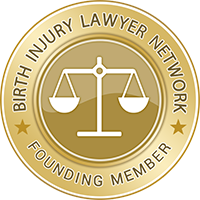Neonatal Hypotonia
Hypotonia refers to the decreased muscle tone of a patient. Muscle tone in this case pertains to the continuous and passive partial contraction of the muscles which helps maintain a person’s posture. Hypotonia not only happens among adults but it can also occur in children even as young as newborns and is called Neonatal or Congenital Hypotonia. It is characterized by lack of muscle tone apparent at birth or directly after birth which will affect the baby’s posture and movement of the affected muscle.
Types of Hypotonia
There are two types of Hypotonia—central and peripheral. When the decreased muscle tone results from disruption in the nerve signals in the brain or spinal cord, it is called Central Hypotonia but when it happens due to nerve damage between the spinal cord and muscle, it is called Peripheral Hypotonia. Simply put, Hypotonia is basically the brain’s inability to communicate with the muscles.
Causes of Hypotonia
Hypotonia can be caused by cerebral palsy, brain and spinal cord injury including bleeding into the brain, serious infections such as meningitis and encephalitis, and genetic chromosomal disorders such Down’s syndrome, Prader-Willi syndrome, and the Tay Sachs disease.
It can also be caused by hormonal and metabolic disorders such as congenital hypothyroidism and Rickets; peripheral motor nerve disorders such as spinal muscular atrophy and charcot-marie-tooth disease; disorders that disrupt signals between nerves and muscles such as myasthenia gravis; disorders that affect the muscles such as muscular dystrophy and connective tissue disorders such as Marfan syndrome and Ehlers-Danlos syndrome.
Symptoms of Hypotonia
More than a condition, Hypotonia is a symptom or an indication of an underlying condition. Hypotonia will not affect the cognitive functions of a baby except when it is caused by genetic and chromosomal disorders but a Hypotonic baby may take longer to learn to sit up, crawl, walk and talk and may have difficulty feeding.
Hypotonic babies will exhibit little or no control at all of their heads which tends to flop from side to side; when held up, they will feel limp; they are unable to put weight on their leg or shoulder muscles; their arms and legs will tend to flop around and hang straight from their sides and not bent at elbows, hips and knees; they will have difficulty sucking and swallowing and they will have a weak cry.
This flopping quality is the reason why Hypotonia is also known as the “floppy baby syndrome.”
Diagnosis
A baby who is suspected to have Hypotonia will immediately be referred to a specialist who will do an initial assessment by questioning the mother before subjecting the baby to a full physical examination. The baby may be made to undergo several tests such as blood test, computerized tomography or magnetic resonance imaging, electroencephalogram, electromyography, nerve conduction studies, muscle biopsy and genetic testing.
Despite exhaustive tests, there are some times that no underlying cause will be found. This will be referred to as benign congenital Hypotonia.
Treatment of Hypotonia
The test results will be very important because through it, the specialist will know what caused the Hypotonia and from there they will know how to go about the treatment. Although in most cases the incidence of cure is not high in Hypotonia, it is still treatable by physiotherapy, occupational therapy and sometimes speech and language therapy.
Find an Experienced Birth Injury Attorney in your Local Community
 Find A Lawyer in Columbus, OH
Find A Lawyer in Ohio
Find A Lawyer in Any State
Find A Lawyer in Columbus, OH
Find A Lawyer in Ohio
Find A Lawyer in Any State
